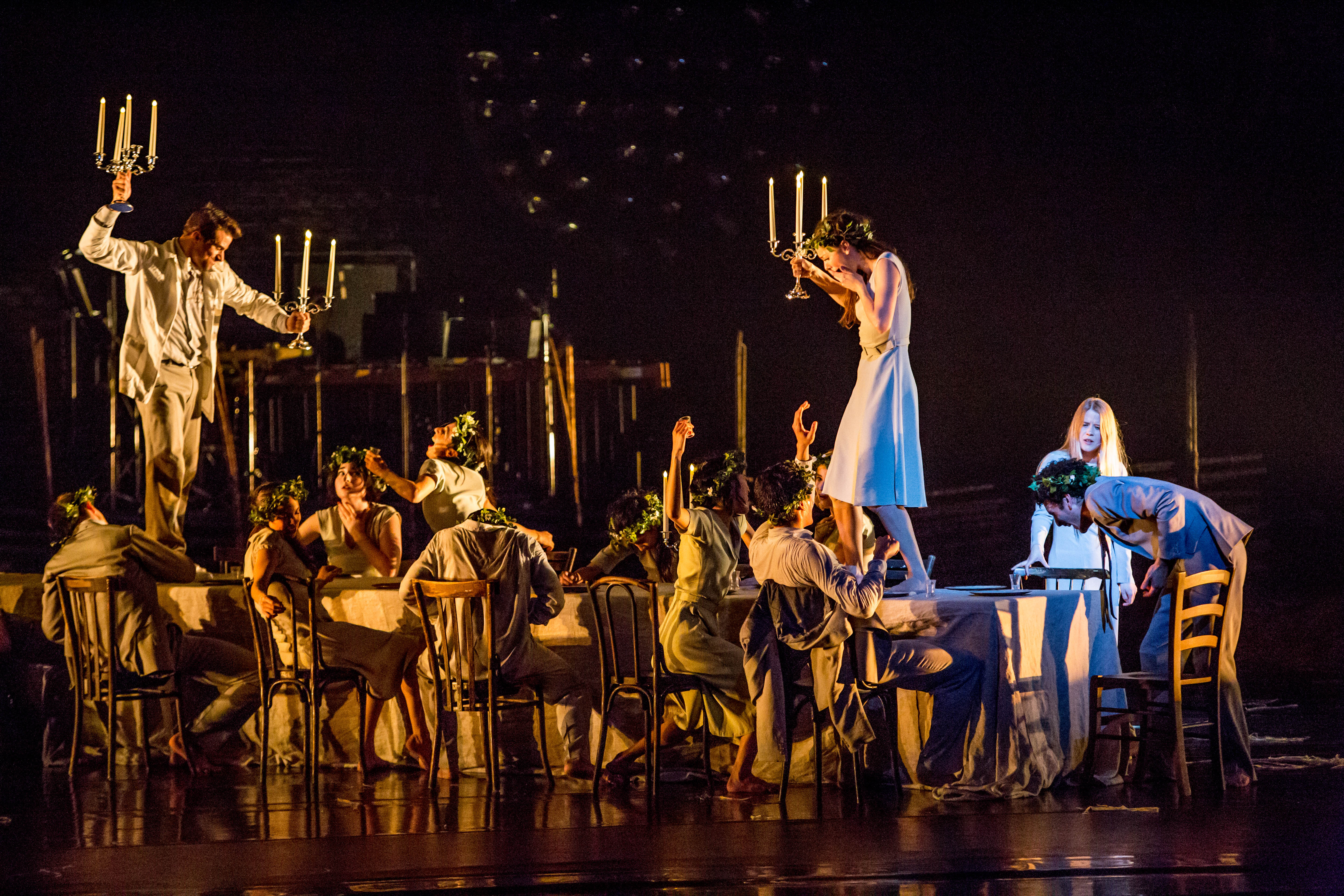CHICAGO — In April, my partner and I attended the Joffrey Ballet’s performance of Alexander Ekman’s Midsummer Night’s Dream. We loved it. Neither of us have seen Joffrey take on something so weird. Case in point: there were three larger than life fish props and a genius incorporation of dancer-like stuffed mannequins that was downright unsettling.
But the thing that I can’t get over about this piece was the same-sex partnering in the hay bale scenes near the beginning of the ballet. When I saw two men and two women entering the space in close proximity I initially assumed the dancers made some sort of spacing error. When what followed was same-sex romantic partnering, my jaw hit the floor. Amongst the standard tableaux of heterosexual pairs, there were two men and two women dancing together. I have never seen explicitly sexual same-sex partnering on a ballet company, let alone one with as big a reputation as Joffrey.
I’m sure it’s happened before somewhere. Friends have told me about some scattered instances of same-sex partnering on the company. Brock Clawson’s Crossing Ashland was cast as both a male/female duet and a male/male romantic duet. I hear some of Ekman’s other pieces include same-sex partnering as well, so, like, thanks man, for throwing some gay characters on stage.
I don’t see much ballet. As a gay, female-bodied, non-binary person — I like to be specific — I don’t feel like I have much of a home in ballet. Plenty of my reasoning has nothing to do with my gender identity or sexuality. Ballet is expensive and exclusive. To perform it professionally requires incredible talent and access to intense training from a young age. To attend performances regularly requires an hourly rate higher than what I earn at my café day job.
However, I find that whether I’m in class or attending a performance, my sexuality and gender come to the forefront of my identity. I stand out alongside a group of mostly gay men and mostly straight women at the barre. When I go to a new studio, or a class with a lot of student dancers, I get stared at. I’ve made a game of how many times I need to make direct, prolonged eye contact with someone before they’ll mind their own business and get back to warming up. As a dance community, we forget about female-bodied people when we talk about gay acceptance in ballet. It is a space crawling with gay men, but I challenge you to show me one out, queer, female ballet dancer in a major company. I’m actually not being hypothetical here, I cannot find any and would love to be proven wrong.
The same goes for performances. When it comes to ballet, companies keep it painstakingly hetero. This always surprises me because, in my experience, the ballet world seems to be run by gay men — in class, in companies, at the helm. Why don’t we see more same-sex partnering in performance?
Allow me to back pedal to my description of the Midsummer scene with gay partnering: This ensemble scene happened in two parts. During the first part, there was a female pair and a male pair, but when the scene was reprised, the female coupling was left out. I assume this is because there was a moment when one of the women would have had to assist the other in jumping off a tall hay bale. This is sort of like… a lift? Perhaps Ekman is unaware that women have upper body strength too?
It’s a small thing, but I struggle to not let this kill the vibe of inclusivity that Ekman brought to the stage in the first place by putting gay romantic partnering in a ballet. On the one hand, it was a pre-Pride miracle! On the other, it’s 2018 and this male-dominant queerness was only on stage for a few minutes. How long will it take before we see a gay principle character? How long until we take a page from modern day Shakespeare and begin to update the casts of historical pieces of art to more accurately reflect the communities in which they are presented?
Tradition and history are all well and good, but we as a dance community have the power to change the norms that have allowed ballet to fall so far behind the times. If ever there was a time to go for change, it’s now. Have you walked into a Target lately? It is downright fashionable to sport rainbows and support the homos. Heck, even Donald Trump tried to convince us he was on our side throughout his campaign.
Ballet doesn’t have to be straight (and white, and skinny), and in my view, Ekman and Joffrey took one small step here toward bringing ballet into the 21st century with regard to representation of homosexuality. I personally am excited by the inclusion, and I want to see a lot more of it.
—
Header image by Cheryl Mann
